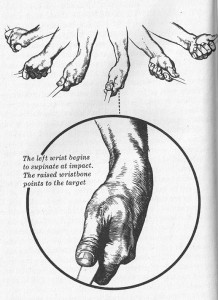Winner: Jordan Spieth by one stroke over Dustin Johnson and Louis Oosthuizen
In 1971, Alan Shepard hit a specially prepared 6-iron while on the moon. If you want to know what a golf course in the moon would look like, I give you Chambers Bay, site of this week’s U.S. Open.
Amidst sandy areas, dunes, and steep hills, you can actually find fairways, greens, and trees (well, just one tree).
Getting the ball around the course is not straightforward. The fairways, which instead of being shaped like elongated sausages, look more like ruptured appendixes, offer several lines of play depending how much of the fairway you want to bite into.
As for the greens, they are not the slightest bit simple. If the USGA miscalculates, a pin position could be anywhere from embarrassing to impossible.
This photo shows the 1st and 18th fairways, with Puget Sound, Fox Island, and the Olympic Peninsula in the background.
Par will be 70, but it breaks down as 35-35 or 36-34 depending on whether the 1st and 18th are par 4s or par 5s (they will swap each day). Total yardage can vary between 7,200 to 7,600 yards.
Though it might not be apparent on television, there is an overall elevation difference from the highest and lowest spots on the course of over 300 feet.
Even though it is the Pacific Northwest, and Puget Sound, along which the course lies, is essentially an inland sea, there isn’t much rain or wind in June.
Trains run by the course affecting play on the entire 16th and 17th holes, and the tee shot in 18. These are not little commuter rains, but full-sized freight trains. Do not expect golfers to be allowed to wait the three or four minutes it takes for them to go by before hitting a shot.
In case you’ve ever wondered how hard a U.S. Open course is, the course rating this week is 77.3, and the slope rating is 145. That means if you shot 90, you could turn in a handicap differential of 9.9. Par is a +5.7 differential. But actually, I think it’s much harder than that.
The course is too new to have the key holes identified, but the most picturesque one is the 15th, a par 3 that runs toward the Sound and has the course’s only tree perched behind the green.
Here’s a detailed look at the course, hole by hole, from a caddy at the course. Study his comments well to get the most out of watching the tournament.
There are some odd rule quirks that you, and especially Dustin Johnson, should pay attention to. Greens and fairways are made of the same grass, fine fescue, and cut to virtually the same height. It can be difficult to know if your ball is on the green or not.
At the 2010 U.S. Amateur, played here, the USGA put small white dots around the green to mark its limits. They haven’t decided if they will do that for the Open. When in doubt, call a rules official, though how he or she will know is a good question.
Sandy areas that are raked are hazards, while sandy areas that are not raked and contain vegetation are through the green. Sometimes both can be found in the same larger patch of sand. Again, call a rules official if in doubt.
Finally, players will be permitted to move stones that are in a bunker, according to a local rule the USGA will put in effect for the tournament.
I asked a friend of mine, Jim O’Donnell, a 9-handicapper who used to live in Seattle, if he had played the course and if so, did he have any comments I could use for this post. He had played Chambers Bay, and here are a few of his thoughts:
“Accuracy and knowledge of the greens and approach areas will be required more than power. After I played some holes, I tried to determine again where a landing area for a successful shot should be. Alas, that doesn’t mean I could later execute that shot. The difference between an excellent approach and a disappointing one will be so fine that only someone in complete control of his ball striking will prosper.”
“For some greens, the undulations, ridges, and swales were a problem that only experience could mitigate. In that sense I agree with the USGA official [Mike Davis] who has stated that a cursory knowledge of the course will not suffice. There will be complaints about the greens.”
So who do I pick to win? The player with the best control of his irons will be hard to beat. That can be anyone who gets hot for four days. I will say this: the winning score will be over par, which means a player who is content to take what the course gives him will have a big advantage.




